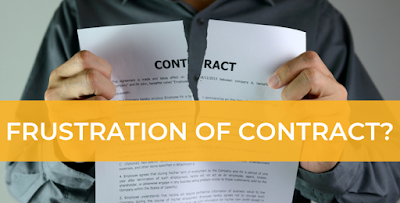
In the spring of 1989, ninety-six Liverpool fans were killed
and many hundreds more seriously injured in a human crush during the team’s FA
Cup semi-final match against Nottingham Forest. This tragic event, known as the
Hillsborough disaster, is indelibly scarred on the national collective memory;
as are the shortcomings of the police, the press and the public inquiries. What
is less well known – at least outside of legal circles – is that many of the
friends and family of the victims have faced further bitter disappointment in
their attempts to win compensation for the intense psychiatric harm they
suffered, and continue to suffer, as a result of the disaster. The key legal
starting point is the decision of the House of Lords in Alcock v Chief Constable of South Yorkshire [1992]. In this case,
the court set out three criteria for a successful claim by secondary victims of
psychiatric harm; those who suffer psychiatric damage as a result of injury to,
or death or imperilment of, another. Firstly, the claimant must have enjoyed a
relationship of ‘love and affection’ with the primary victim. Secondly, the
claimant must be close to the accident in time and space. Thirdly, the injury
must have been caused be a ‘shocking event’ which is perceived by direct sight
or hearing. This article shall seek to explain why this ratio is misguided and the criteria much too restrictive, both in
regard to the particular facts of the case, and also in terms of the wider
development of tortious principles, and shall suggest some tentative proposals
for law reform.
However, even
before the decision in Alcock, the
law relating to psychiatric harm had long been set on an unfortunate path. The
key difficulty remains the initial distinction drawn between psychiatric and
physical disorders, with markedly harsher rules applying to the former than the
latter; it is worth noting that, until recently, lawyers commonly referred to
psychiatric harm as ‘nervous shock,’ a term indicative of the profession’s
inherent scepticism.
However, there is no clear reason why one form of harm should be prioritised over
the other. Who is to say that the mental anguish of losing a loved one in
harrowing circumstances is any more or less painful than experiencing severe
physical injury? Moreover, such a division of mind and body appears arbitrary
in the light of modern medical science; it has long been recognised that
conditions stemming from the psyche can have a physical impact, and vice-versa.
A clear
example of the more stringent approach applied to psychiatric harm is embedded
in the first of the Alcock criteria;
the requirement that claimants had a relationship of ‘love and affection’ with
the primary victim in order for a duty of care to be established. This is a
marked departure from wider tortious principles, according to which, unless
statute dictates otherwise, one party owes a duty to another if they have
created a dangerous situation which the ‘reasonable man’ would have foreseen as
such. There is no personal nexus requirement. Beyond this imbalance, the deeper
issue is that only a small class of relationships are presumed to be sufficiently
close – that of husband and wife, and that of parent and child. Firstly, is it
not somewhat arbitrary that only spousal and paternal bonds are prima-facie recognised?
What of siblings, civil partners,
step-parents or close friends? It
appears that the courts’ approach here is rather old-fashioned and out of step
with reality. Secondly, and more significantly, placing a burden of
proof on the majority of claimants to evidence the fact that they enjoyed a
sufficiently close relationship with the primary victim has unseemly practical
implications. Professor Jane Stapleton summarises the issue powerfully:
“Is it not a disreputable sight to see brothers of
Hillsborough victims turned away because they had no more than brotherly love towards the victim? In future cases
will it not be a grotesque sight to see relatives scrabbling to prove their
especial love for the deceased in order to win money damages and for the
defendant to have to attack that argument?”
Post-Hillsborough,
we can already see the impact of the legal hurdles facing non-familial
psychiatric harm claimants. Take McFarlane
v EE Caledonia [1994]. The plaintiff in this case, a sailor aboard a vessel
within sight of the of the Piper Alpha oil rig disaster, watched hundreds of his
friends and colleagues burn to death. The Court of Appeal, despite recognising
that this was an ‘unusually horrific’ event, nevertheless chose not to
undermine the rules set out in Alcock,
and defined this claimant as a mere bystander to whom no duty was owed.
Just as restrictive
as the relationship criterion are the rules applying to breach; firstly, that
the claimant must be sufficiently proximate to the event, in time and space. Whilst
this vague requirement has been expanded to include the ‘immediate aftermath,’
it still seems to impose an artificial time limit, inevitably bound to result
in inadequacies of justice. Indeed, Mr Alcock’s claim was dismissed on
precisely this ground:
“Mr. Alcock identified his
brother-in-law in a bad condition in the mortuary at about midnight, that is some
eight hours after the accident. This was the earliest of the identification
cases. Even if this identification could be described as part of the
"aftermath," it could not in my judgment be described as part of
the immediate aftermath.”
The court’s reasoning
here was that the primary victim was not in quite the same gruesome state that he
had been at the time of the accident itself. This ratio betrays the readiness of the court to decide which events
meet its own discretionary standard as to what is sufficiently shocking,
regardless of the subjective experience of the claimant.
The second
element of the rules applying to breach – that the injury must have been caused
by a ‘shocking event,’ perceived via direct sight or hearing – is equally
unsatisfactory. To begin, there is an implicit assumption at work here that the
‘shocking event’ must constitute a single, discrete phenomenon, which clearly runs
counter to reality. For example, in Young
v MacVean [2015], a comparable
decision of the Scottish Court of Appeal, a mothers’ dawning realisation, after
witnessing a fatal accident, that hers son was in fact involved was not
considered adequate. Tellingly, the High Court of Australia has rejected the
‘sudden shock’ requirement as arbitrary.
Moreover, the caveat that the event needs to be perceived by the unaided senses
has thrown up considerably difficulty. In Alcock,
the undoubtedly harsh position was taken that the viewing of the disaster on
television could not be said to be equivalent to actually seeing or hearing the
event. However, there is a potentially much more serious issue relating to the
armed and emergency forces. For example, a soldier may not actually be able to
see with clarity his comrade fall in the heat of battle; is this to say that
the event could not cause psychological trauma, and that he or she should be disqualified
from making a claim against the Ministry of Defence if the event was caused by faulty
equipment?
The courts
have been unusually forthright in their admission that the restrictive criteria
applied to secondary victims of psychiatric harm is a public policy position
intended to prevent excessive liability; indeed, the term ‘control device’ runs
though the case law to refer to the legal hurdles that such victims must pass.
Even if one accepts the premise that updating the law in this area would open
the floodgates of litigation, this seems poor reason to stall reform. Surely
justice demands that victims have appropriate right to redress, regardless of
any potential increase in workload for the courts or the legal departments of
defendant companies, particularly when institutional defendants are more likely
to benefit from deep-pockets and insurance.
Of course,
this is not to say that the law in this area should be relaxed entirely. It would
be absurd to enable people to win compensation for, say, the trauma they
experience following the death of a celebrity that they learned of through
social media. Any reform must seek to carve a middle way between striking out
legitimate grounds of action arbitrarily and being so open as to as to impose
universal duties of care. Broadly speaking, this could be achieved by bringing
the law regarding psychiatric harm and secondary victims in line with normal
personal injury, but some more specific proposals might include:
1) A case-by-case, common sense approach
to the category of relationship criteria, which leaves it to the judge to
(generously) interpret whether a relationship is capable of giving rise to psychiatric harm in the event of injury
to, or death or endangerment of one of the parties.
2) A recognition that psychiatric harm
might well be caused by a culmination of shocking events, not only a single
phenomenon.
3) A much broader approach to the
perception requirement, which take account of the context of the event and the
emergence of 24-hour live news coverage and social media.
Ultimately,
in the vast majority of cases, claimants seeking compensation for psychiatric
harm are seeking recognition of how their lives have been destroyed by the
negligent actions of the defendant. Therefore, it is concerning that the
current law in this area is denying claimants fair opportunity for redress and
closure due to limitations and distinctions that are both artificial and
unjust. It is too late for the families and friends of the Hillsborough
victims, but, if the law is to reflect moral values and social and
technological contexts, it is imperative that we strive for reform going
forward.
Stapleton
J., ‘In Restraint of Tort’, in P. Birks (ed.) The Frontiers of Liability, vol. 2 (Oxford University Press, 1994)
95
Fordham
M., ‘Psychiatric Injury, Secondary Victims and the Sudden Shock
Requirement,’ Singapore Journal of Legal Studies (2014), 41-58
Law Tutors Online, UK Law Tutor, UK Law Notes, Manchester Law Tutor, Birmingham Law Tutor, Nottingham Law Tutor, Oxford Law Tutor, Cambridge Law Tutor, New York Law Tutor, Sydney Law Tutor, Singapore Law Tutor, Hong Kong Law Tutor, London Tutors, Top Tutors Online and London Law Tutor are trading names of London Law Tutor Ltd. which is a company registered in England and Wales. Company Registration Number: 08253481. VAT Registration Number: 160291824 Registered Data Controller: ZA236376 Registered office: Berkeley Square House, Berkeley Square, London, UK W1J 6BD. All Rights Reserved. Copyright © 2012-2024.


